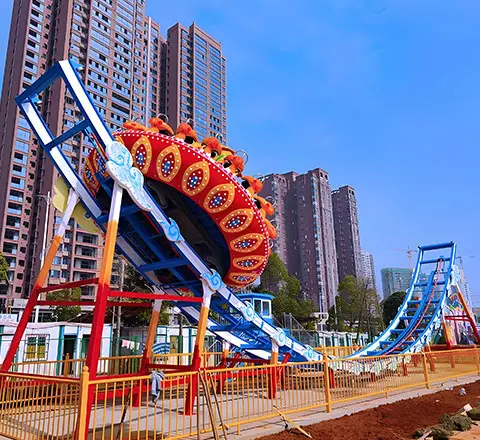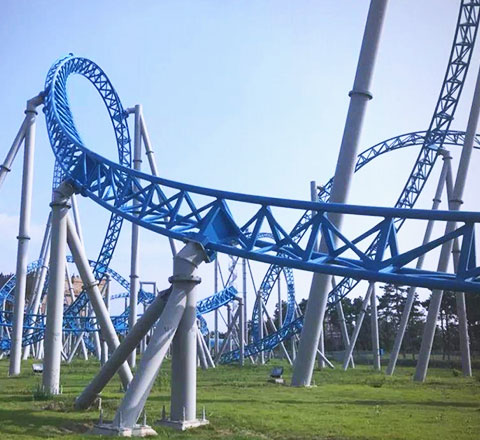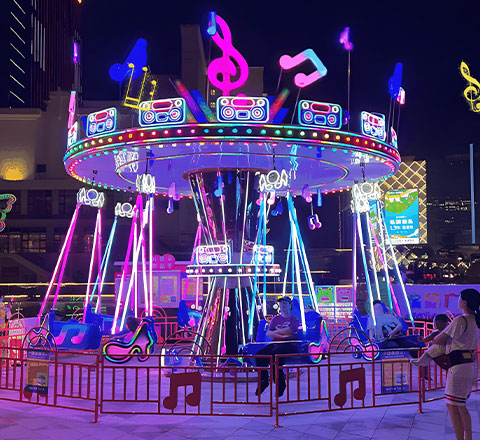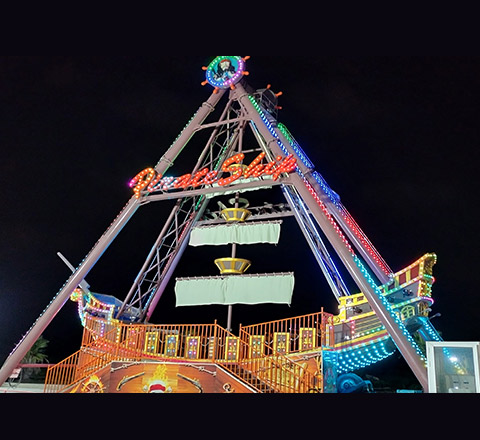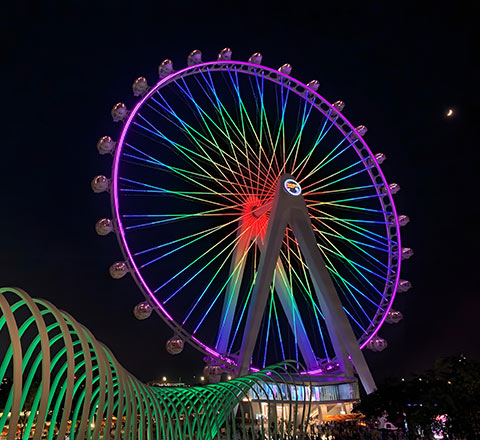
When visitors board a Ferris wheel and gaze over the city lights from above, they experience a sense of romance and awe. Behind this thrilling experience lies a rigorous maintenance and care system. Ferris wheels are not only the core equipment in amusement parks and city landmarks, but they also bear the responsibility of ensuring the safety and experience of visitors. To ensure long-term and stable operation, systematic maintenance and care are essential. With over 20 years of amusement rides experience, Carnee Rides, a leading Ferris wheel manufacturer, will guide you through the essential knowledge of Ferris wheel maintenance. This article will comprehensively analyze the key points of Ferris wheel maintenance, from surface protection, key component checks, drive systems, electrical systems, to annual deep maintenance.
1. Surface Protection and Regular Cleaning
Why Surface Protection is Crucial for Ferris Wheels
The exterior of a Ferris wheel is exposed to harsh weather conditions, making it prone to rust, corrosion, and wear. Regular surface protection and cleaning help maintain the structural integrity and aesthetic appearance of the Ferris wheel.
Surface Maintenance Checklist:
- Clean the exterior surface regularly, especially after heavy rain or storms.
- Apply anti-corrosion coatings to metal parts like spokes and axles.
- Regularly touch up the paint to maintain its appearance and prevent further damage.
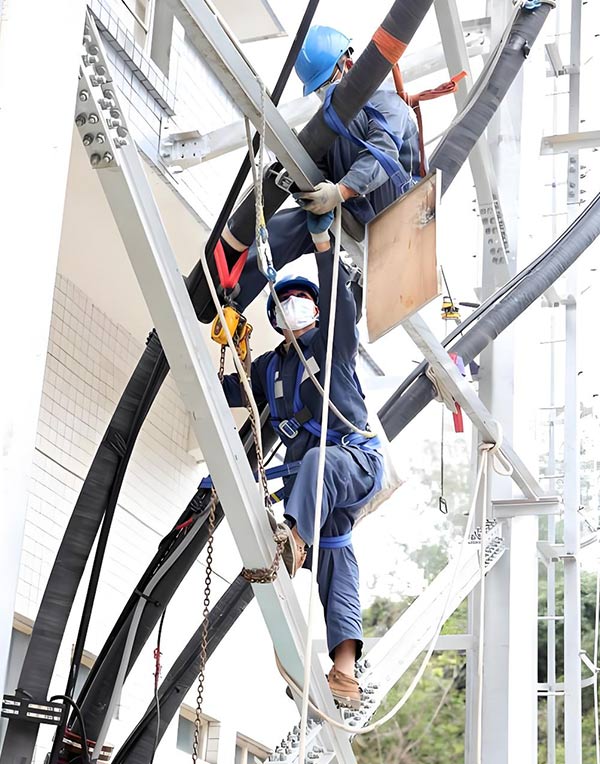
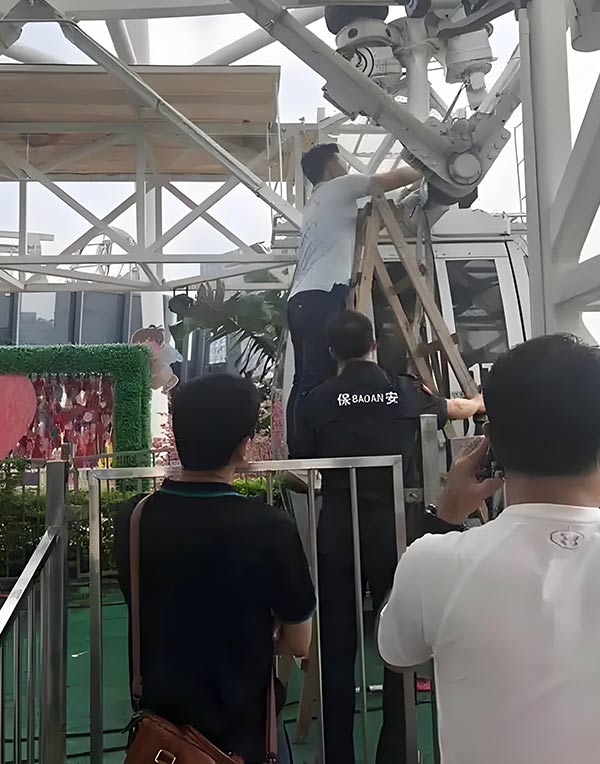
2. Key Ferris Wheel Components Maintenance
Key parts of the Ferris wheel, such as the braking system, spokes, axles, and cabins, bear the primary load. These parts must be regularly inspected for cracks, rust, and other issues to ensure safe operation.
Pillars and Welds:
- Check for cracks, looseness, or deformation.
- Conduct magnetic particle or ultrasonic testing for critical welds.
Center Main Shaft:
- Listen for abnormal noises during operation.
- Lubricate bearings regularly and replace them every five years.
Wheel and Large Discs:
- Check the tensioning devices for proper alignment, and adjust if significant bending is noticed.
- Annual checks for radial runout should not exceed 1/1500 of the diameter of the circle.
3. Cabin and Passenger Safety Components
As the part that visitors directly interact with, the safety and comfort of the cabins directly affect the visitor experience. Regular inspection and maintenance of the cabins are crucial.
Ferris Wheel Cabin Inspection:
- Clean the exterior of the cabins regularly to keep them tidy and aesthetically pleasing.
- Check for looseness or aging of glass, seats, and guardrails.
- Ensure the cabin doors are securely locked to prevent accidental openings.
Cabin Bearings:
- Perform an annual inspection of wear, ensuring deformation does not exceed 0.5% of the component’s size.
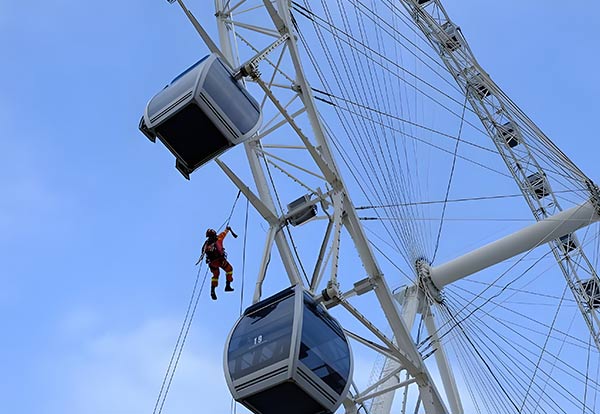
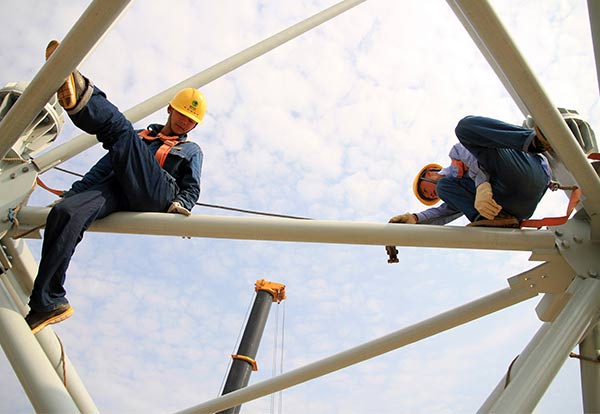
4. Drive and Electrical Systems
The Ferris Wheel drive system, including motors, gears, and lubrication systems, is responsible for the rotation of the Ferris wheel. Without proper maintenance, it may lead to equipment failure and delays in operation.
Drive System Maintenance Checklist:
- Regularly lubricate moving parts like gears and axles.
- Check for wear or overheating in the motor.
- Replace damaged parts, such as belts and gears.
Electrical System Maintenance Checklist:
- Inspect cables, electrical panels, and connectors for damage.
- Test the control system to ensure proper operation.
- Check the lighting system to ensure all lighting equipment is functioning correctly.
5. Annual Deep Maintenance and Overhaul
Why Annual Overhauls Are Crucial
Even with regular maintenance, Ferris wheels still require an annual deep overhaul to ensure their long-term stability. Annual overhauls include comprehensive checks of all mechanical, electrical, and safety systems.
Annual Maintenance Checklist:
- Perform a full inspection of the mechanical and electrical systems.
- Replace all worn or damaged parts to avoid equipment failure.
- Ensure all components comply with the manufacturer’s specifications and calibrate them as needed.
6. Ferris Wheel Operational and Safety Guidelines
In addition to routine maintenance, Ferris wheels must comply with strict safety protocols. These protocols include safety briefings before operations, qualified staff training, and operational guidelines during adverse weather or system malfunctions.
Key Operational Safety Protocols:
- In the event of harsh weather or system malfunctions, the Ferris wheel must be immediately shut down for inspection. It should not be operated under unsafe conditions.
- Operators must be properly trained, certified, and follow the operation manual and safety guidelines strictly.
- A safety briefing must be conducted before each operation, and the equipment should be fully checked to ensure all systems are functioning safely.
Conclusion
The safe operation of a Ferris wheel relies on scientific maintenance and care systems. Through daily checks, regular maintenance, and annual overhauls, not only can visitor safety be ensured, but the service life of the equipment can be effectively extended. As an operator of large amusement facilities, it is essential to strictly adhere to maintenance standards, prioritizing safety and prevention. Carnee Rides, as a top Ferris wheel manufacturer in China, offers various sizes of Ferris wheels for sale and provides professional maintenance and care services. If you have any questions or needs, please feel free to contact us. We are committed to providing you with the best service.
You may also like: Essential Guide to Amusement Park Ride Maintenance

